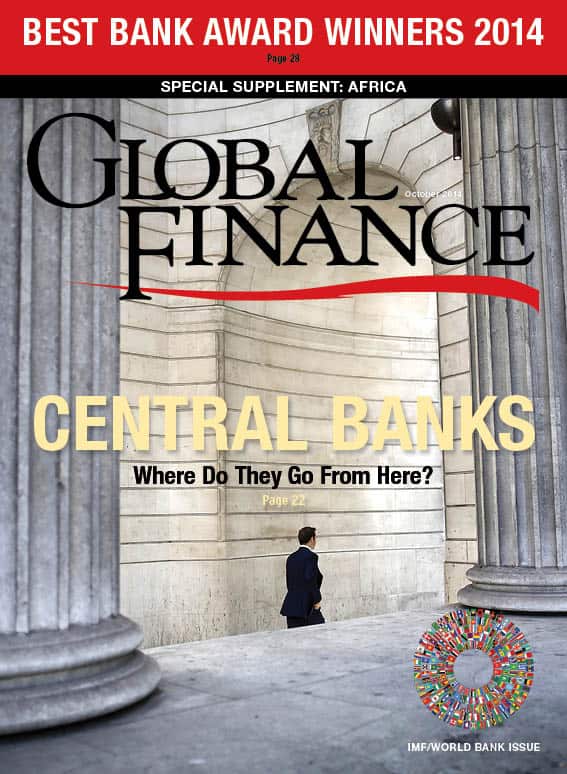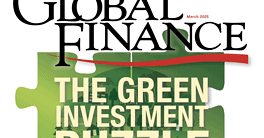Dear Reader
OCTOBER 2014 | VOL. 28 NO. 9

The annual meetings in Washington, D.C., of the IMF and the World Bank afford a unique mix of events where economic forecasts are made, meetings held, official statements delivered, and award ceremonies (including Global Finance’s Best Banks) conducted.
Having Finance ministers, central bank governors, bank CEOs and leading economists all in one place creates the natural conditions for a kind of “economic and financial Olympics.” One can check the pulse of the global economy as influenced by the sociopolitical and geopolitical climate.
In an interview published recently in the UK’s Financial Times, Christine Lagarde, managing director of the IMF, expressed her concern about the “structural disconnect between economic and political structures.” She was talking about the way economic systems are becoming more integrated, while political systems, fragmented and parochial, are “going in the direction of less globalization.”
One could argue with her thesis, but there is no question that efforts to coordinate at the economic level have made progress in the past few years. Economic coordination still depends, though, on the political climate, as shown by the increasing use of economic sanctions between countries as a political tool in global and regional disputes. Economics and politics, though they pull and tug, remain interwoven.
The agenda of the IMF and World Bank meetings and the evolving role of central banks are a natural choice for this issue’s cover story. The goal is to look beyond the recent round of quantitative easing by central banks in the West and to contemplate what role these banks are likely to perform in the near future, given that the lines between supervisory and monetary policy have blurred.
This issue contains our annual list of the Best Banks across many different categories and specialties. We also announce the global winners in 14 different categories from corporate banking to supply chain finance, and from Best in Emerging Markets to Best Investment Banks. Another feature in this issue is the annual Central Banker Report Cards. This year, seven central bankers received a top score of A, and the report cards have significantly expanded to include a total of nearly 70 countries.

Andrea Fiano | Editor
afiano@gfmag.com

